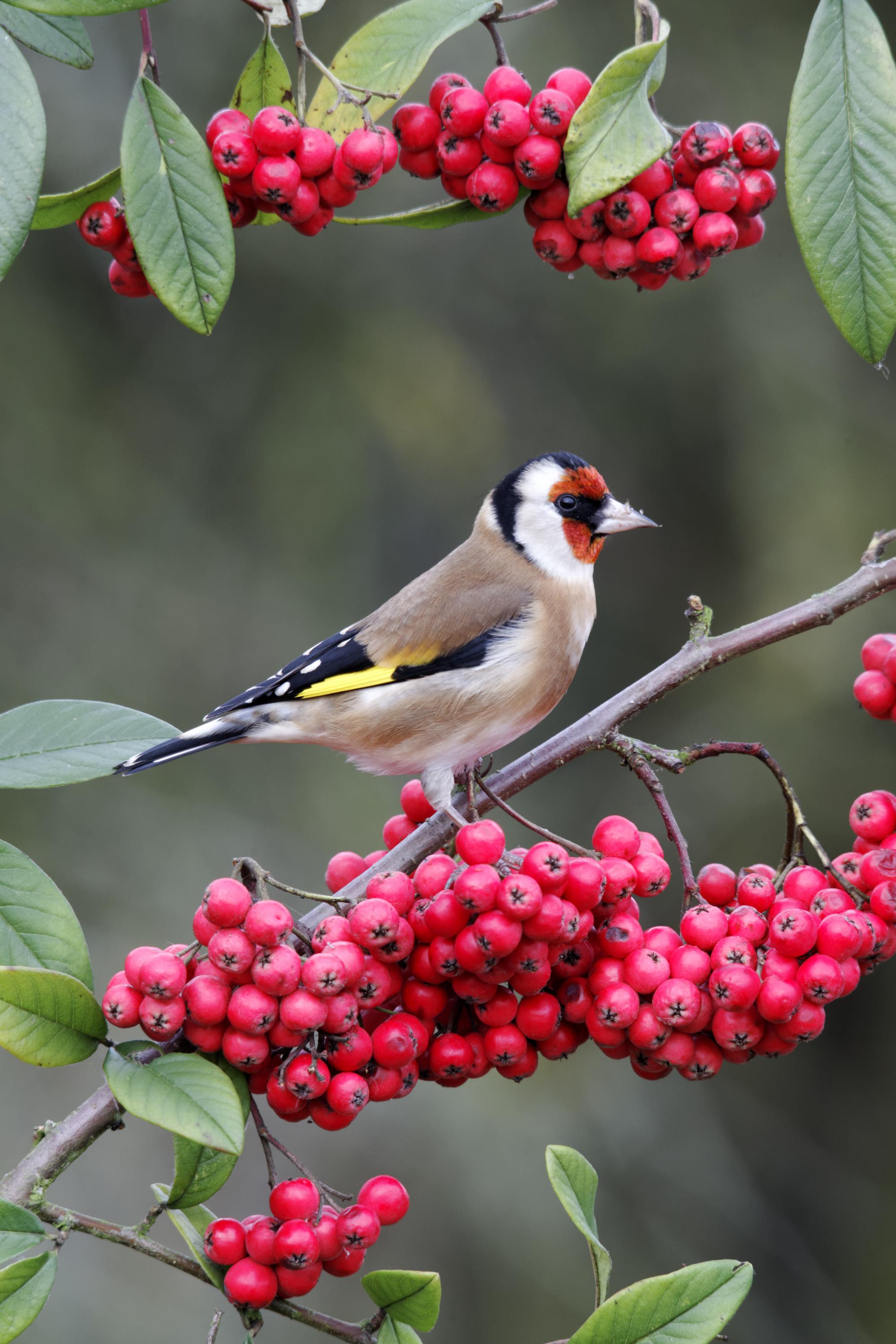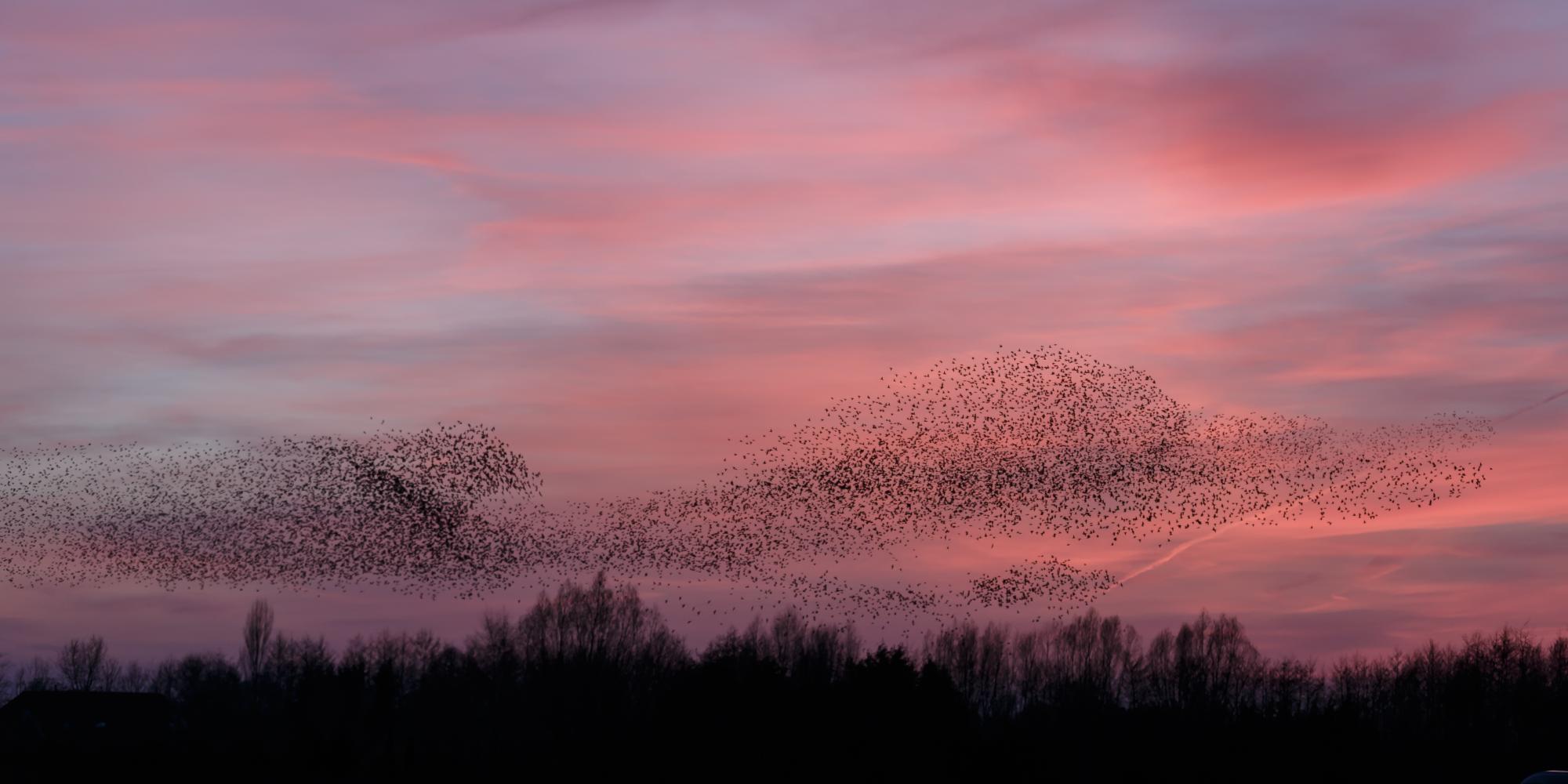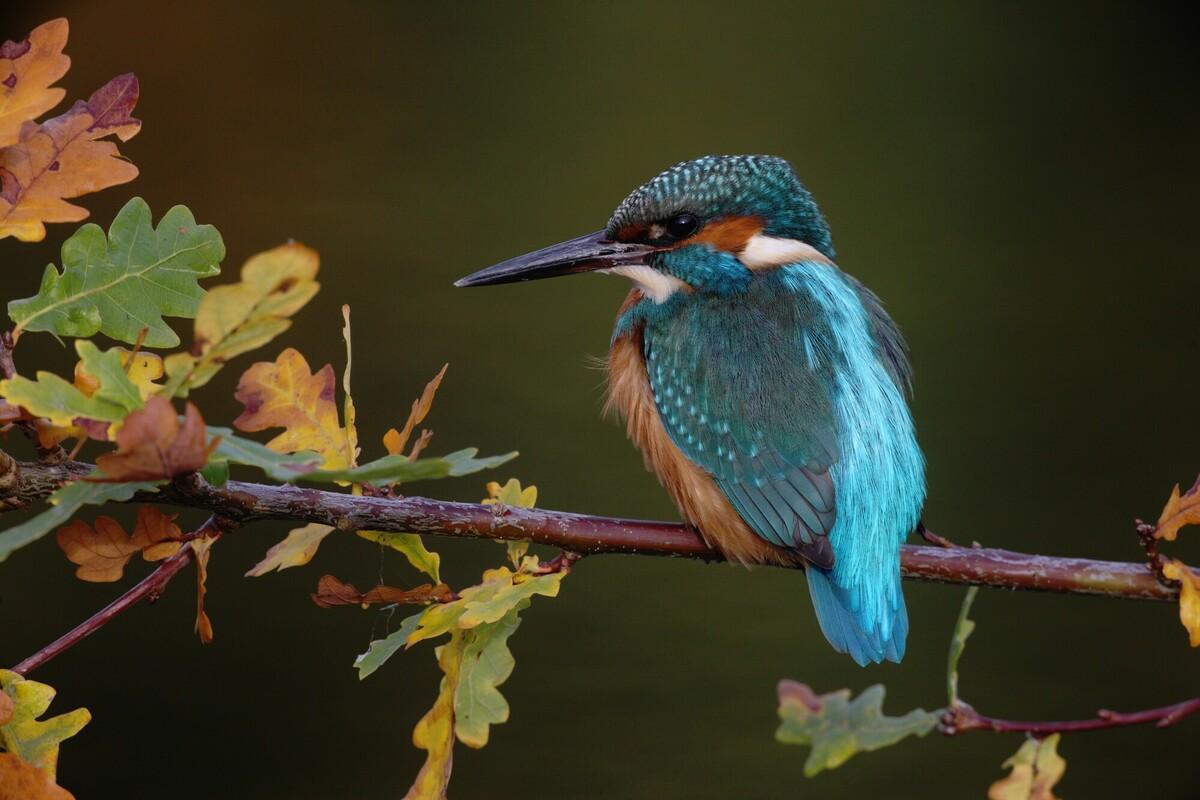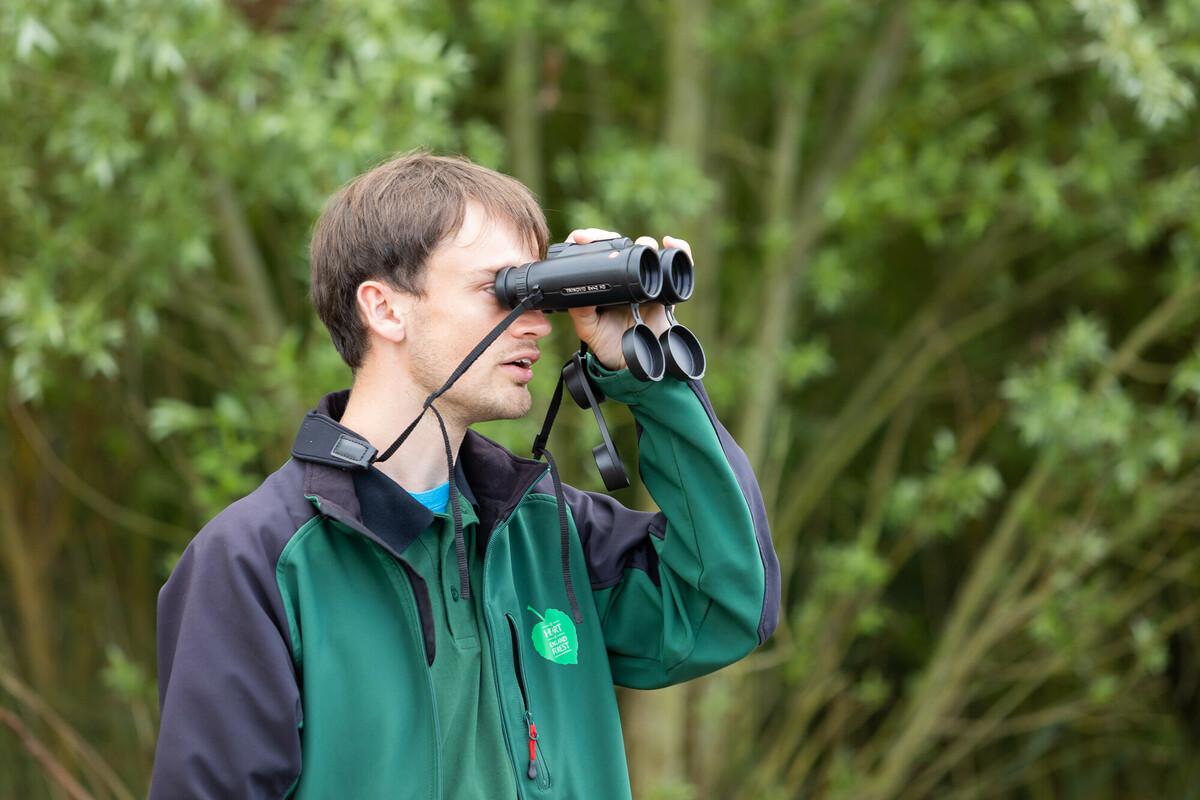
Birds to hear and see in the autumn
Tony Kelly, from The Birmingham University Ringing Group, spends hundreds of hours volunteering each year ringing birds, and regularly records the bird species found in the Heart of England Forest. Here he shares the birds to look and listen out for on your walks this autumn.

Autumn birds
Autumn is the months of September, October, and November, with the astronomical start date being the 21st of September, when daylight and night hours are the same length. Fortunately, birds are not so particular with definitions, and their lives, movements and decisions will largely be determined by suitable habitat, food availability, daylight hours, and weather. Habitats will accommodate completely different species of birds at different times of the year, and woodland is a very good example.

A rich feeding ground in the Forest
At the beginning of autumn, we say goodbye to many summer migrants including warblers and flycatchers. Some individuals, of species such as chiffchaff and blackcap, overwinter because of our milder climate. Keep an eye out for blackberries in a hedgerow, or an elderberry bush, and you may see blackcap feeding anywhere in the Forest - note the female has a brown cap on her head. Towards the end of autumn, also check mistletoe berries, which are available into the winter months and a good food source.
Mid-September to early October is a good time to see meadow pipits passing through on their way further south. These are best seen in open fields feeding on the ground away from hedge and tree cover, and may later be joined by flocks of linnet, with the occasional skylark or whinchat amongst them. Stonechat may also be present, surveying the local terrain from a prominent viewpoint, such as a stand-alone weed or bush in young plantations like Noleham Wood and Becks Wood. The surrounding hedgerows will provide cover for yellowhammer, bullfinch and reed bunting to move along, and large flocks of goldfinch can appear anywhere - particularly where teasel and other seed rich vegetation exists; look out for all these birds around Braggington and Coxmere Woods.
Robins and blackbirds are all year round occupants in the Forest (and in your garden). However, there is a very good chance that the individuals seen in spring and summer are not those same individuals present through autumn and winter. Many will be visitors from further north and Northern Europe/Scandinavia. A blackbird ringed in the Forest near Netherstead in January 2020 was recaptured in Finland 3 months later - a journey of 1,730 kms!
As autumn progresses, blackbirds, song thrush and mistle thrush will be joined by flocks of fieldfare and redwings, which feed on apples and a variety of available berries, including hawthorn, elderberry, and rowan, such as you may find in Haydon Way Wood. Rowan is also a favourite of waxwing, should there be an irruption from Europe/Scandinavia of this magnificent species. Thrushes also forage on the ground for worms, snails, and other soil dwellers such as insects, and can be seen feeding in large flocks across open fields. If out walking when the ground is frozen, it may be worthwhile looking for berries and fruits, to see what birds are feeding on. Also look for birds foraging and turning over leaf-litter, as the ground underneath may not be frozen, and will provide a microclimate for invertebrates.
From mid-autumn onwards, redpoll and siskin will arrive from further north and boost numbers. These can move around in good-sized flocks and will be looking for weeds and seeds to feed on, with birch, alder and conifer seeds a favourite; the abundance of these around Morgrove Coppice makes these species ever present in winter.

Predatory birds
Of course, where there are flocks of birds, there will be bigger opportunistic predators waiting. A sparrowhawk may be seen in any habitat, zipping along at speed. The peregrine will be aiming for bigger prey, such as waders, pigeons, and wildfowl. Kestrels are easy to identify with their hovering 'flight' in any grassier areas of the Forest. Kestrels also possess a super-hero power, as they can see ultraviolet colours which are present in urine, and this is useful when looking for small mammals in dense undergrowth.
Common buzzard can also be seen almost anywhere. A large raptor with rounded wings, its slower flight and tendency to soar provides an opportunity to get a really good view. If lucky, there may also be a red kite overhead - look out for a forked tail and reddish brown colour.
A very early morning or late evening walk may be rewarded with a sighting of a hunting ghostly white barn owl quartering over a field. You may hear tawny owls calling - the "too-wit - too-woo" calls made by the male and female, dueting to provide the call we all know so well. Little owls may be harder to observe but try looking on the apex of any buildings or structures around the Forest, as well as the old orchards at Dorsington. It may be spotted sitting on a prominent perch or viewpoint, perhaps in lower branches of a tree, where it has a good field of vision of the surrounding ground, often calling like a yelping puppy. Owls also possess a super-hero power - super hearing. They have asymmetrical ears (left ear lower than right) that are out of line on the vertical plane, resulting in a slight difference in sound hitting each ear, helping to pinpoint where the sound has come from, vital when searching for prey at night, or in low light.
It is also worth checking the many pylons running through the Forest in Spernal for a perched peregrine or raven. The latter is very vocal and can be found by listening out for its characteristic “croak”, often given in flight – look for a wedge-shaped tail. Other members of the Corvid family (magpie, carrion crow, rook, and jackdaw) will be on the lookout for an easy meal. Features to help distinguish these apart include the all-black carrion crow, whereas the rook has a grey beak, and the jackdaw is slightly smaller, wearing a grey scarf.

Birds of a feather flock together
During the autumn/winter months, many of the more common woodland birds will join large flocks and move around as one, so keep listening out. These flocks may contain blue, great, coal and long-tailed tits, chaffinch, treecreeper, goldcrest, and nuthatch, and can be seen in all our ancient woodlands, such as Spernal Park and Bannam’s Wood, and older planting, like at Dorothy’s and Giddings Wood.
Do not forget to keep an eye out for the spectacle of a murmuration of starlings - huge numbers gathering to fly in a swooping mass. A real treat for the birdwatcher.
The benefits of grouping together include safety in numbers, keeping warm, and exchanging useful information on good feeding sites.

Birds by water
Around ponds and streams, there is a good chance of seeing mute swan, grey heron, coot, moorhen, kingfisher, reed bunting, greylag and Canada geese, tufted duck, and mallard. Try and view quietly from a distance, to not disturb them, and check ducks to see if there are any teal or shoveler amongst them. Grey, yellow, or pied wagtail will also be present at different times during autumn. The ponds at College Wood are a great place to spot most of these species.
Little egret is a relative newcomer to the UK but can now easily be seen and stands out anywhere, as it is a small heron that is totally white. In late autumn, also check for goosander or red-breasted merganser on any largish water body – especially the rivers Arrow and Avon within the Forest.
Some wader species will be present in the right habitat but may be difficult to see. Woodcock, common and jack snipe are generally nocturnal and rely on their amazing cryptic colouring to go undetected during the day. Common and jack snipe will feed amongst vegetation in boggy marshy areas, and woodcock will leave the cover of woodlands like Spernal Park at night and feed in surrounding damp fields. These species are particularly vulnerable to disturbance and will be easily flushed by dogs running off pathways, without the owner ever being aware of the intrusion.
Unfortunately, both common snipe and woodcock are on the Amber List of Conservation Concern, but the Heart of England Forest is creating new wetlands and enhanced existing ones with the aim of helping these species, such as at Oak Wood and Morton Bagot.
Lapwing may also be observed in flocks in open fields where there is short vegetation and can be identified by their broad black-and-white wings and acrobatic flight, but these are becoming a rare sight, with their conservation status now Red Listed. Our wetland creation and enhancement work should also help these species.

Spotting tips
When out for a walk in the Forest, try slowing down and looking at the surrounding habitat. In woodland, it is particularly useful to stop and listen - you may not be able to identify the bird from the call, but it will make you aware that something is there.
Listen for the sound of tapping on wood, and you may be rewarded with a great-spotted woodpecker on a tree branch or trunk and, if you hear what sounds like a hysterical laugh, chances are it is a green woodpecker. Look out along the ground or for a greeny-yellow bullet shape in undulating flight.
If you have a pair of binoculars, scan around you, remembering at this time of year everything will be building up daily fat reserves to survive the night, so look for potential food sources. Fruits and berries will attract different species to those feeding on seeds or insects, but some can do all, so be aware where these sources are, and you may get lucky.
Use our handy spotter's guide to help you identify the species you see and hear.
Finally, record what you see and report it to The Heart of England Forest by emailing info@theheartofenglandforest.org and/or use an app such as the Birdtrack App from the British Trust for Ornithology.



